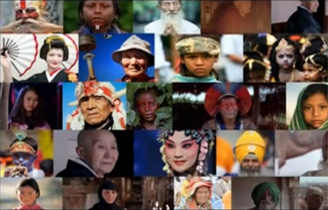Jiangnan String-and-pipe Music

Jiangnan String-and-pipe Music is a branch of string-and-pipe music, popular in Jiangnan, or the south of Changjiang River, especially in the areas between Shanghai, Nanjing and Hangzhou, with its elegant and fine style. Shanghai and its neighboring places are where it originated, developed and got its name.
The organization of the band is so flexible that it can include as many as 20 people or as few as 2 -3 instruments, to meet with different occasions or to suit different melodies. The main instruments include di (horizontal flute), sheng (mouth reed organ), pipa (4-stringed lute), xiao (vertical flute), erhu (2-stringed fiddle), sanxuan (3-stringed lute), dulcimer, qinqin (a plucked string instrument), clappers, bell and wooden block. The artists can while either sitting or standing.
In Shanghai string-and-pipe music was originated in the late 19th century and early 20th century. At beginning it had no fixed name and was called freely as “silk and bamboo music” or “national music”, and sometimes “pure music” or even “crane”. It reached its prime in the 1940s when it was so popular that it covered both the urban and the suburban areas of Shanghai. According to the data we have today, the term of “Jiangnan string-and-pipe ensemble” first appeared in 1954, on the program of “Shanghai classic folk music performance” and “national music performance” sponsored by The Preparatory Committee of Shanghai Association for National Music. After then, the name was gradually fixed.
String-and-pipe music is very entertaining. Indeed, “playing silk and bamboo music at the break f work” used to be a social fashion in Shanghai. People often gather at home or in the teahouses to play strings and pipes, as a means to “cultivate their temper and clean up their mind from evils”, or to exchange their performing techniqnes. The music is also performed at weddings, funerals, folk holidays and temple fairs. The performance are of two kinds, one by professionals, and the other by non-professionals. The latter are mostly silk-and-bamboo music fans coming from all walks of life, guest-performing on different occasions at the request of their relatives and friends for no pay, whereas the former perform for a living.
After 1911, Shanghai became a center for string-and-pipe music. Many performing groups such as “Cultural Gathering”, “Qingping Society”, “Juntian Society” and so on were organized and their influence went far and wide. A gathering of lovers of string-and-pipe music at the City God Temple around 1920 even attracted more than 200-people from different parts of the country. Statistics shows that from the beginning of the century to the 1950s, there were 428 recorded string-and-pipe music groups in Shanghai, a proof of the scale and influence of the music genre. The most famous “Eight Tunes” of Jiangnan string-and-pipe music also won their name in Shanghai’s New World Theatre. Since 1950s new ways of entertainment have emerged, but Jiangnan string-and-pipe music continues to wax and wane in popularity.
Address: 81, Laiguangying West Road, Chaoyang District, Beijing, China
Zip Code: 100021
Tel: 86-10-64966526
Fax: 86-10-64969281
E-mail: administration@crihap.cn
NEWSLETTER
Leave us your e-mail address, we'll let you know about current events.


